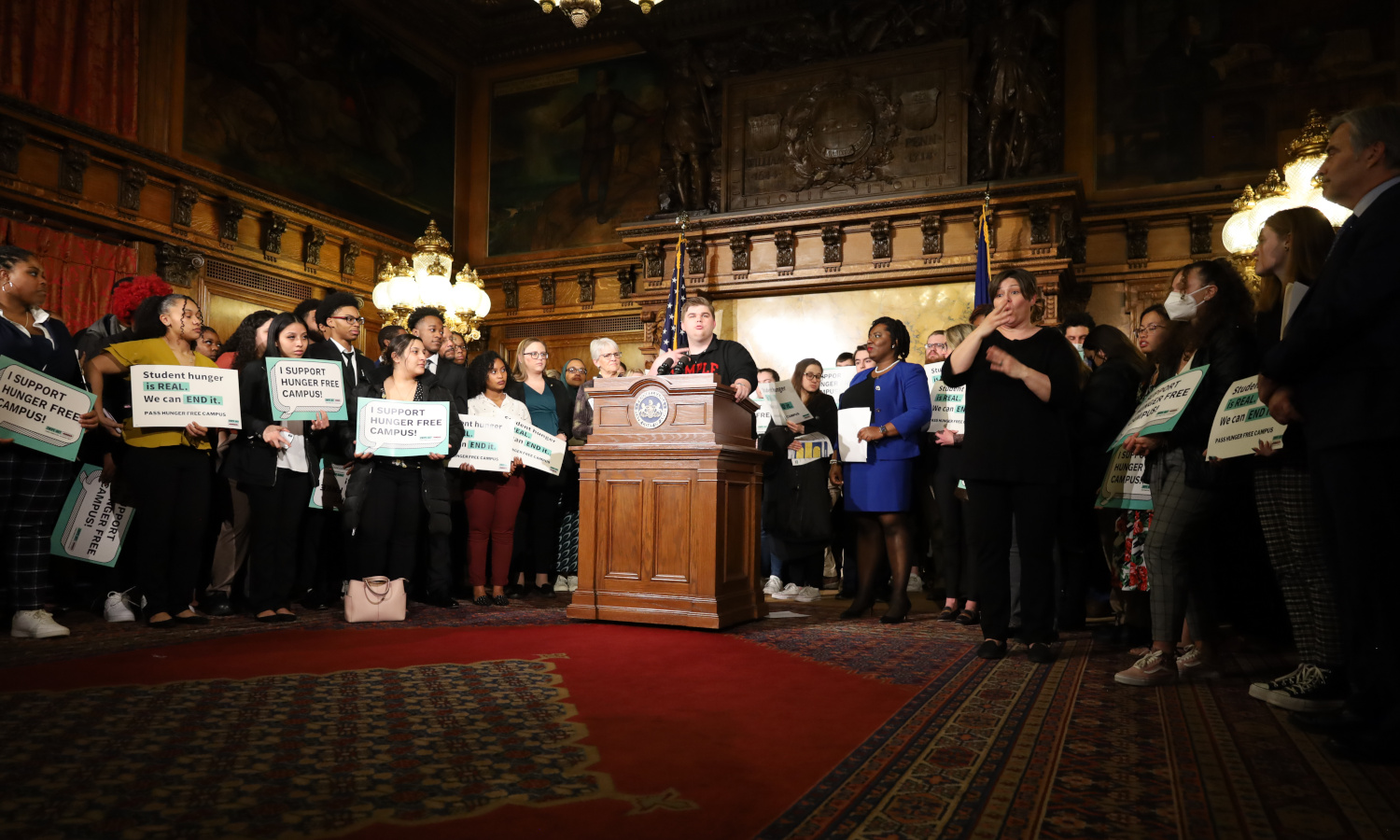Health and Human Services Secretary Xavier Becerra recently extended the COVID-19 public health emergency to July 15, 2022. When temporary pandemic relief measures expire, millions of college students will lose crucial food assistance programs, including the USDA Supplemental Nutrition Assistance Program (SNAP).
In December 2020, Congress passed the Consolidated Appropriations Act to address the rising hunger crisis and economic hardship associated with the pandemic. The Act provided additional funding for SNAP and temporarily expanded the program’s eligibility requirements.
The eligibility expansion opened the door for nearly 3 million college students to receive benefits—a 115 percent increase from June 2020.
The Act allows all students who are eligible to participate in a work-study, whether the student is actively employed or participating in work-study. It also allows students with an expected family contribution of US$0 in the current academic year. These temporary student exemptions remain in effect until 30 days after the COVID-19 federal public health emergency lifts.
Prior to the eligibility expansion, students were eligible to receive SNAP only if they met certain exemptions, including working at least 20 hours per week, caring for a child, and being unable to work. Under these rules, most students of higher education did not meet the eligibility requirements at least half the time.
“I hope that the temporary expansion of SNAP showed policymakers the feasibility of implementing such an expansion and the importance of enabling college students to access the food benefits they are entitled to receive,” Cindy Leung, an Assistant Professor of Nutritional Sciences at University of Michigan School of Public Health tells Food Tank.
Research shows that during the pandemic, food insecurity among college students rose from 30 to 38 percent, mostly due to lack of money. According to a study published in Public Health Nutrition that Leung co-authored, food insecurity among college students is associated with lower college graduation rates and lower chances of obtaining a bachelor’s or advanced degree.
“SNAP is an important part of our anti-hunger safety net,” Leung says. Eligibility expansion “is a first critical step” in supporting food security for millions of students. But Leung notes it is only temporary and tied to the federal public health emergency.
“Food insecurity stems from poverty and financial insecurity and our current financial aid programs are insufficient,” Leung explains. She calls for more robust financial programs to help students and their families cover the full cost of college.
The Hunger-Free College Campus Bill is the main legislation addressing hunger on U.S. college campuses. It enables campuses to establish food pantries, allow students to donate extra meal card swipes to peers facing food insecurity, and create SNAP enrollment opportunities to connect eligible college students with federal assistance. The Bill passed in California, Maryland, New Jersey, and Minnesota, and was introduced in an additional 12 states, including New York and Pennsylvania.
Rachel Sumekh, Executive Director of Swipe Out Hunger, one of the original architects of the Hunger-Free College Campus Bill, calls the Bill “a more holistic solution.” She says that it will continue to support students after emergency relief measures expire.
Robb Friedlander, Swipe Out Hunger’s Director of Advocacy, tells Food Tank that the Bill also offers higher education institutions necessary support. “The SNAP enrollment process is arduous, expensive, and time consuming,” he explains. “We know that a lot of institutions want to enroll their students in SNAP but need extra assistance. That’s what the Bill provides.”
The Hunger Free Campus Bill provides open funding so states can allocate funds as they see fit. This flexibility is helpful for institutions to respond to their needs, including students’ transition to online learning.
But Friedlander says, “hunger does not exist in a silo.” He believes higher learning institutions must also provide other wraparound services, including affordable healthcare, transportation, childcare, and mental health services.
To push for these changes, Sumekh believes a student-led movement is “really powerful.” Swipe Out Hunger uses peer educators to connect eligible students with food assistance. “When it comes to outreach, having the messengers be students addresses the stigma and creates a more trusting voice,” she says.
In March, college students from across Pennsylvania traveled to Harrisburg, calling on lawmakers to pass the Pennsylvania Hunger-Free Campus Bill and Grant Fund. If passed, the Bill will create a grant program for colleges and universities to establish food pantries, hunger task forces, and other longer-term initiatives to eliminate hunger.
“College students are at the crux point where once they’re able to succeed and thrive in college, they earn their college degree and are able to set themselves, their families, and their communities down a path of greater earning potential and build a stronger next generation,” Friedlander tells Food Tank. “Seeing leadership of college students within their district is a powerful and tangible way for legislators to see that small investments will pay major dividends down the road in elevating these students.”
Articles like the one you just read are made possible through the generosity of Food Tank members. Can we please count on you to be part of our growing movement? Become a member today by clicking here.
Photo courtesy of Swipe Out Hunger











